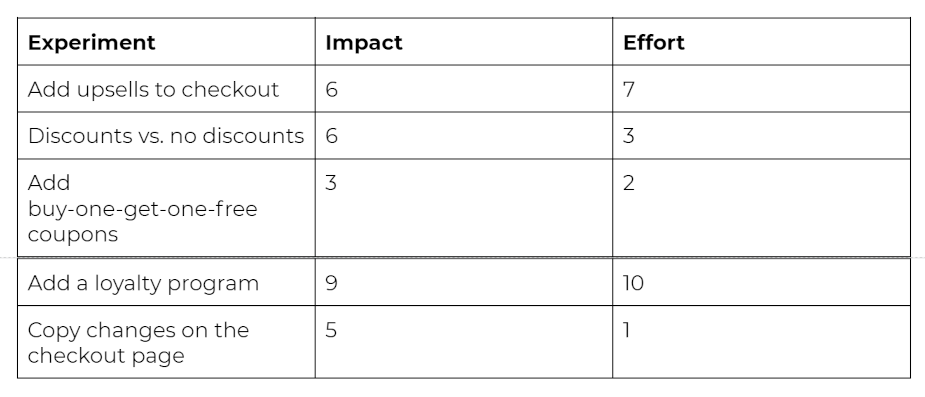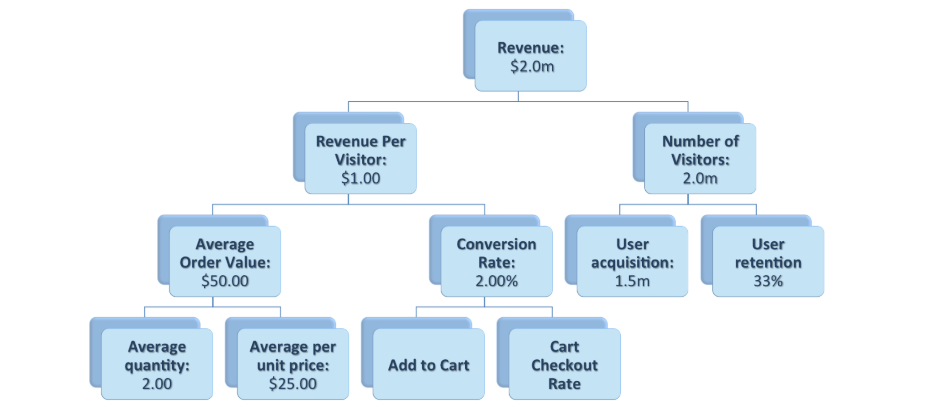
If the Enterprise Wants to Compete in Digital, They Should Have a Disciplined Growth Model

Enterprise companies are always a little behind.
When the iPhone came out, it took roughly six years for large companies to build apps that weren’t just a replica of their websites or a direct translation of requirements.
They finally caught up when they realised their customers wanted the apps to look and feel like the consumer apps made by other high-growth start-ups.
And here we are in 2021, and they’re faced with another challenge. And this time, it’s about growth via digital.
Match Business Goals With Optimisation and Experiment KPIs
Let’s say the business unit within a manufacturing company is measured based on the number of widgets they sell per month via their digital channels. The executive team also receives an additional bonus for selling a certain high-margin widget.
Naturally, the business unit is going to focus on strategies to increase sales of their high-margin widget. It makes their company more money, they get compensated for it, and the client gets what they need. Win, win for everyone.
So, how would you go about doing this?
The traditional way
With the direction being to sell this widget, the product development team will prioritise features that will increase sales. This could mean more featured placement on the website, more digital advertising budget for that product, sales training, etc.
Then everyone goes off, does their thing, and reports revenue separately.
Now, there’s nothing wrong with this approach. But what it lacks is real growth discipline and coordination across internal business units and teams
The growth model way via experimentation
The growth-focused way takes a more disciplined approach by breaking down the revenue goal and creating more refined KPIs that can be tracked and measured.
Example KPIs to measure:
Here are some example KPIs that can contribute to more premium widgets sold.
- Revenue Per Visitor (average order value)
- Conversion Rate
- Customer Acquisition Cost
- Customer Lifetime Value
Each KPI, tracked separately, has experiments tied to it to increase its value.
So let’s say you want to increase revenue per visitor, you can try the following experiments:
- Test adding upsells, or the upsell algorithm, and product lines being offered.
- Test discounts vs. no discounts.
- Test adding buy-one-get-one-free coupons.
- Test adding a loyalty program.
- Test copy changes to the checkout page.
Rank each test by effort and potential impact
Create a spreadsheet with three columns. The headers should be the name of the experiment, the impact of the effort, and the amount of effort. I like to use a 1–10 scale—with 10 being the most impact or effort and one being the least.

In the example above, adding a loyalty program experiment can have a massive positive impact on the organization, but deploying a loyalty program is a lot of work and coordination. That can take a full year to roll out, depending on the size of the company. That’s why It’s a nine impact and 10 effort.
But, for copy changes, it’s a simple copy rewrite, and you can deploy it within minutes.
So, when prioritising your experiments, it makes sense to add the copy change experiment to the top of the list because you can get results quickly without organisational red tape.
Map the goal trees and identify baseline metrics
A goal tree is a way to break down the high-level business metrics and goals into manageable pieces that marketing and product teams can work against.
Here’s a hypothetical goal tree from Optimizely. If the revenue goal is $2 million, what needs to happen to reach that goal? Identify key metrics for each goal in the tree.

For each metric goal, create a testing backlog by identifying optimization strategies and supporting tactics
For each goal identified in the goal tree, define the exact optimisation strategies and tactics you’re going to use to increase that metric.
For example, if we’re going to improve the cart checkout rate, we would create several approaches to increase that.
It could be:
- A/B test checkout copy
- A/B test the number of screens required to check out
- A/B test cart abandonment emails
The path to growth is discipline, testing, and experimentation
My favourite motto is “give us your best guess, and we’ll test it out.”
You can take multiple weeks of long internal debates to decide on the next steps, or you can simply use the data to inform the next action to take.
Enterprises are still catching up with other digital-first organizations, and I truly believe this approach to digital product development is the best place to start.










